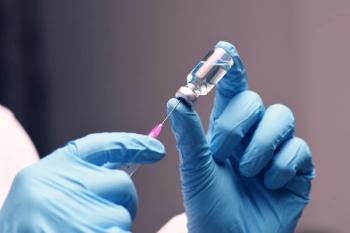
Clostridium Difficile – Not Just an In-hospital Infection
Nearly 1/3 of C. difficile cases are community-acquired, placing the infection squarely in the sights of primary care physicians. A review from ACG 2015, here.
Clostridium difficile infection (CDI) is an increasingly prevalent healthcare associated infection in the United States. In fact, CDI has surpassed MRSA in terms of nosocomial frequency. Risk factors for the development of CDI include hospitalization, antibiotic exposure, age >65 years, and the presence of inflammatory bowel disease. The combination of increased infection rates, rising healthcare costs, and negative healthcare sequelae, make ongoing discussion of CDI-and education on the infection-essential for all clinicians who treat patients in the at-risk population. The fact that nearly one-third of cases are now community-acquired places the infection squarely in the sights of primary care physicians.
An excellent presentation on current strategies to manage CDI was offered at the 2015 American College of Gastroenterology Scientific Session this week by Colleen Kelly, MD, a gastroenterologist and assistant professor of medicine at the Alpert Medical School of Brown University, Providence, RI.
CDI is caused by the disruption of the normal gut microbiota, affecting bacteria that are responsible for normal immune development and protection from pathogens. The disruption of this normal gut flora has been attributed to exposure to antibiotics with alteration, colonization, and proliferation of C. difficile. C. difficile toxin production triggers release of inflammatory mediators which leads to mucosal injury. Indicators of severe disease-requiring hospitalization for therapy-include abdominal tenderness, leukocytosis (>15,000 cells/mm3), and hypoalbuminemia (serum albumin <3 grams/dL).
Despite the high sensitivity of testing, clinicians must remember that a positive test cannot distinguish an asymptomatic carrier from a patient with active infection. Current guidelines discourage testing asymptomatic patients with formed stool or performing a “test of cure” post-treatment.
Therapy should focus on discontinuation of causal antibiotics and initial treatment with oral metronidazole (500 mg, 3 times per day for 10 days) for mild to moderate CDI. Oral vancomycin therapy is recommended for patients who are unresponsive to an initial 5 to 7 day course of metronidazole. If severe disease is present without significant abdominal distension, vancomycin orally (125 mg four times per day) is recommended. With complicated CDI (prior criteria for severe disease plus elevated lactate, hypotension, shock, ileus or megacolon) vancomycin 500 mg orally four times daily plus intravenous metronidazole (500 mg three times daily) is the treatment of choice. In patients with evidence of ileus, therapy with high dose oral vancomycin (500 mg 4 times per day) AND per rectum (500 mg in a volume of 500 ml four times per day) PLUS intravenous metronidazole (500 mg, 3 times per day) is indicated. If ileus/intra-abdominal pathology is suspected clinically, imaging with abdominal CT is indicated for the assessment of severe colitis, megacolon, or perforation, with surgical consultation.
Recurrent disease is a challenging and is encountered in 20% of patients after initial diagnosis and treatment. It has been attributed to metronidazole resistance and impaired immune response. Initial recurrence is treated with the same regimen used for the first episode with subsequent infections treated with tapered and/or pulse dosed regimens.
Studies of probiotic benefits for C. difficile therapy are ongoing. Probiotics are generally well tolerated, but of limited efficacy in treating active infection or preventing further recurrence of disease. Fecal microbiota transplantation (FMT), wherein donor feces are transplanted to the infected patient with the goal of restoration of “good” gut microorganisms, is supported by current treatment guidelines in patients with a third recurrence after a taper or pulse dosed vancomycin. Studies are under way to provide FMT in pill form for patients to avoid a colonoscopy that instills the transplant in the colon.
CDI continues to be a challenging and increasingly prevalent disease entity and is not restricted to the hospital milieu. Therapeutic regimens should be based on the severity of illness and patient tolerance, with treatment discouraged in asymptomatic patients.
References:
Kelly C. New paradigms in the management of C. difficile. Presentation at: 2015 American College of Gastroenterology Scientific Session; October 18, 2015; Honolulu, Hawaii.
Newsletter
Enhance your clinical practice with the Patient Care newsletter, offering the latest evidence-based guidelines, diagnostic insights, and treatment strategies for primary care physicians.


















































































































































































































































































